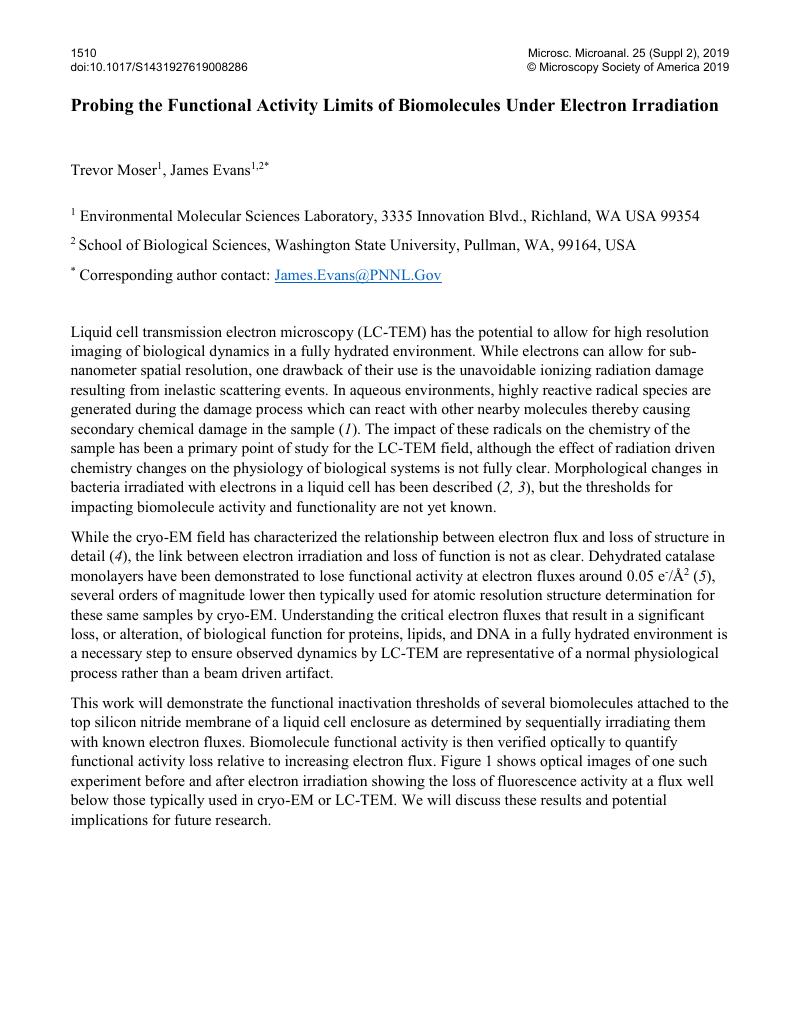Crossref Citations
This article has been cited by the following publications. This list is generated based on data provided by Crossref.
Moser, Trevor
and
Evans, James
2022.
Comparing Structural and Functional Changes of Biomolecules under Electron Irradiation with Liquid Cell Transmission Electron Microscopy.
Microscopy and Microanalysis,
Vol. 28,
Issue. S1,
p.
2174.



